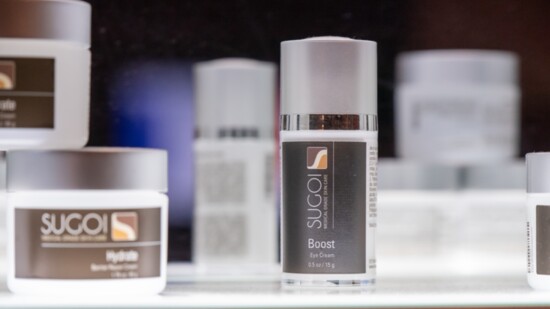While the proverbial fountain of youth may still spring from ancient mythology, the ravages of time have met their match in modern-day medicine.
Folks no longer have to undergo the knife to reboot looks. Noninvasive and minimally invasive procedures now tighten sags and fade fine lines in less time than a fashionably long lunch.
“How dermatologists address aging has changed dramatically over the last two decades,” says Dr. Tanya Rodgers, whose Skin Specialists of Allen opened its doors in 2009.
The most invasive procedures Dr. Rodgers offers simple injections – for example, Botox. Botox requires no anesthesia. Filler injections require topical anesthesia.
Other than that, she employs noninvasive laser technology and prescribes myriad topical treatments, including her own niche Sugoi product line.
And most recently, Rodgers added Ultherapy and CoolSculpting to her epidermal repertoire.
Ultherapy, first introduced stateside in 2009, employs ultrasound technology to noninvasively firm and tone skin. CoolSculpting, FDA-approved a year later, freezes and removes fat from one’s chin or neck.
Unlike yesteryear’s invasive procedures, today’s noninvasive treatments promote ultra-fast healing, and the odds of infection are miniscule.
Equally alluring, cosmetic adjustments are no longer just for the rich and famous. Getting a dermatological makeover is nowadays reasonably affordable. (For example, a simple Botox injection runs less than $1,000.)
Of course, when it comes to epidermal care, Ben Franklin’s time-honored words still hold true: “An ounce of prevention is worth a pound of cure.”
To wit, while one’s facial flaws can be touched up later in life, Rodgers advises to develop a four-step skin regime early on.
Firstly, one should always apply a sunscreen of at least 30 SPF. And one should daily apply a topical antioxidant, retinoid and an alpha or beta hydroxy acid -- affordably-priced over-the-counter compounds.
However, one should always, Dr. Rodgers warns, be wary of snake oil salesmen.
“Clients come in all the time with products containing a bunch of extra ingredients that amount to window dressing,” Rodgers says. “They have essentially paid a ton for fluff.”
For example, the working ingredient in hair-growth products is Minoxidil, but a company will throw in sundry ingredients to falsely proclaim its product’s high-priced superiority.
And yes, hair growth falls within the dermatological services Rodgers provides. Better yet, she prescribes products with 2.5 times the Minoxidil found in leading brands like Rogaine.
Sometimes, though, Dr. Rodgers turns away clientele.
“I occasionally see girls in their early 20s requesting procedures,” she explains. “I tell them to wait 10 years and then check back …
“Skincare is just not that complicated, and we should not be misled by ads suggesting it is.”
And now, thanks to advanced medicine and technology, maintaining a somewhat youthful glow into our golden years is not only simple, but also relatively affordable.
“An ounce of prevention is worth a pound of cure.”
